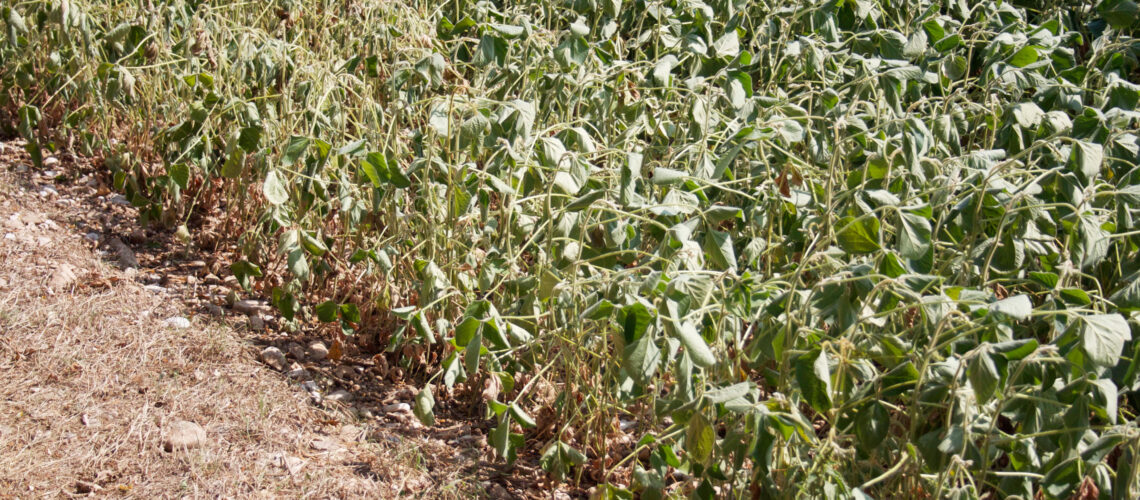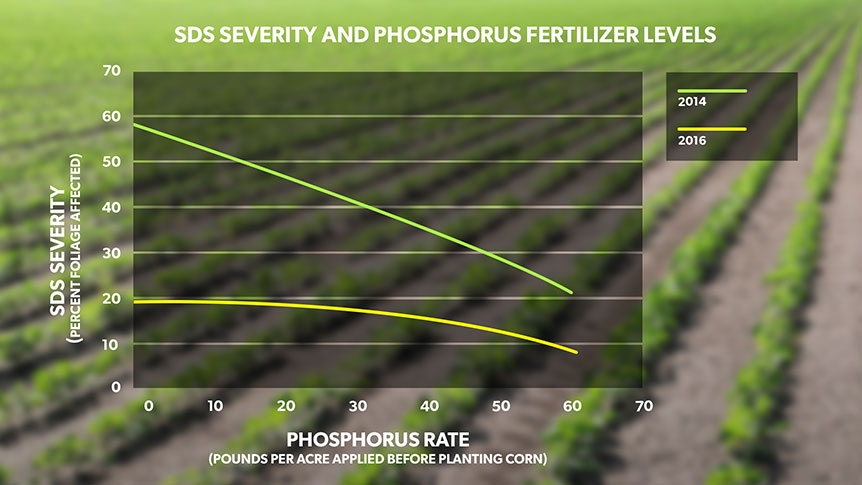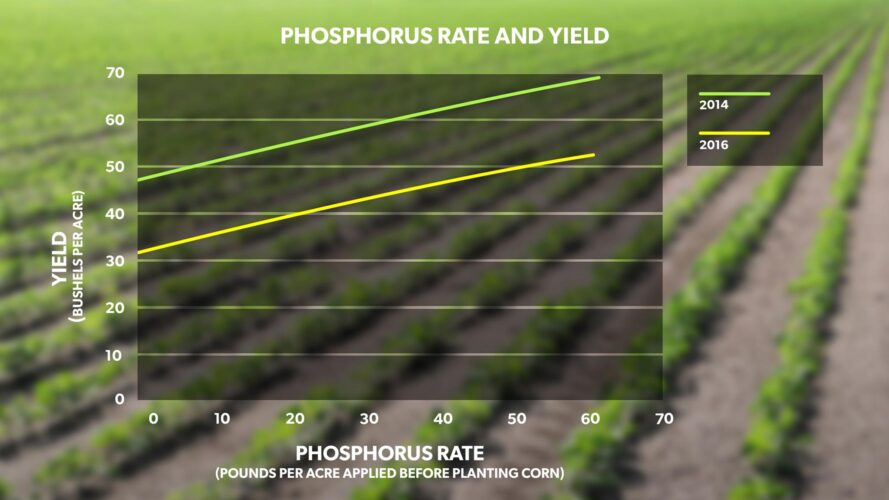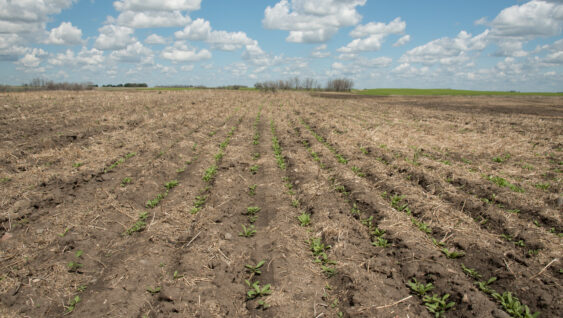Proper Phosphorus Levels Lower SDS Risk

For farmers preparing to plant more soybeans, a plan against the various soybean-specific diseases that could diminish yields and reduce profits is important, especially regarding Sudden Death Syndrome (SDS).
Dr. Eric Adee, Assistant Professor and the Agronomist-In-Charge at the Kansas River Valley Experiment Field near Topeka, is aiding soybean farmers by focusing research efforts to minimize the incidence of diseases such as SDS.
“Our latest data illustrated a connection between increased soil phosphorus test levels and the reduction of SDS severity,” said Dr. Adee. “The link between phosphorus and SDS, which has not been documented before, could help farmers minimize future yield losses.” Adequate phosphorus levels would be needed especially in areas already prone to SDS, such as the Kansas River Valley.
Linking Phosphorus and SDS
In the last two years of soybean production, Dr. Adee found that soils testing with higher phosphorus levels have reduced the incidence of SDS by more than 50 percent. This connection between phosphorus and SDS emerged as an accidental finding from a long-term study launched in 1972. In the study, a crop rotation of corn in the odd years and soybeans in even years is used. Treatments in this long-term study test include multiple rates of nitrogen, phosphorus and potassium. Fertilizers were applied before corn was planted, as a two-year application, and soil samples were taken before soybean planting in even years.
In this study, Dr. Adee’s soybean plots first developed SDS symptoms in 2014 because rainfall during June was more than three inches above the 30-year average. The plot with no phosphorus applied had 58 percent of its leaves showing SDS symptoms. In contrast, the plot with 60 pounds of phosphorus per acre applied had just 23 percent of its foliage showing SDS symptoms. After 42 years of corn and soybean production, phosphorus levels in soils have decreased in plots receiving 0 pounds of phosphorus, leading to phosphorus stress in soybean plants.
Dr. Adee had similar results in 2016. Overall, there were less SDS symptoms observed due to below-average precipitation in June. The plots with no phosphorus applied had 20 percent of its foliage showing SDS symptoms. In the plot with 60 pounds per acre only 8 percent of the foliage presented SDS symptoms.

In 2014 and 2016, the percent of soybean foliage expressing SDS symptoms decreased as the phosphorus rate applied increased.
Yield Results
Phosphorus application lowered the incidence of SDS, contributing to higher soybean yields. In 2014, the plots that historically receive 60 pounds of phosphorus per acre yielded 52.9 bushels per acre. The plot with no phosphorus applied yielded 34 bushels per acre.
Similar results were observed in 2016. The plots that receive 60 pounds of phosphorus per acre produced the highest yield at 69.5 bushels per acre yield, and the plots without any phosphorus fertilizer applied yielded 46.4 bushels per acre. Without the excessive rainfall as in 2014, yields were not as affected by SDS.
Dr. Adee was surprised by the soybean yield difference between the highest and lowest phosphorus rates in the study, especially in the past few years. This was the largest yield difference he reported for phosphorus in the long-term fertility study and could be attributed to differences in soil test phosphorus. For example, plots receiving the highest rate of 60 pounds phosphorus per acre and plots receiving no phosphorus for the past 30 years had soil test levels of 46 and 6.5 ppm, respectively. After years of mining the soil of phosphorus with high removal rates in corn and soybean grain, the lack of phosphorus application is leading to stressed soybean plants and therefore, making them susceptible to SDS. Based on Dr. Adee’s research, phosphorus levels play a significant role in yield reduction due to SDS.

Even though the environments of both years were different, Dr. Adee saw a strong correlation between soil phosphorus levels, the incidence of SDS, and yields.
“The consistency of the results from these two years further confirms the role phosphorus is having on the severity of SDS in this long-term fertility study,” he said. “These results enforce the importance of monitoring soil phosphorus levels in fields and increasing the soil phosphorus levels in fields with a history of SDS.”
Farmers can apply liquid or dry phosphate fertilizers on soils testing low for phosphorus to raise the soil phosphorus levels and reduce the chance of developing diseases such as SDS.
While the importance of proper soil fertility to boost yields has been known for years, research into the positive effects of nutrient management on crops resistance to disease is becoming more prevalent in the industry. To help determine the return on investment benefits of proper soil fertility levels, farmers can use tools such as the eKonomics ROI Calculator 2.0.
Could phosphorus applications on your soybean crop influence SDS and your yields?
Of soils tested in Kansas in 2015, 47% tested below critical levels for phosphorus. Consult with your retail agronomist and try it out on your farm via either a broadcast or liquid phosphorus application on your beans.


